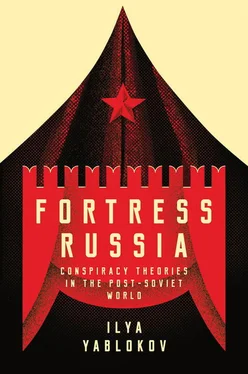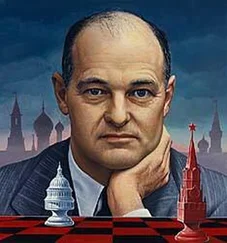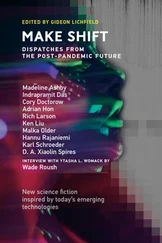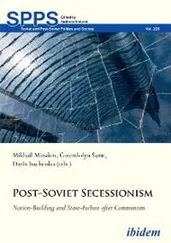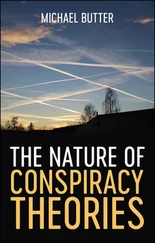Gorlizki, Y. and Khlevniuk, O. (2004). Cold Peace: Stalin and the Soviet Ruling Circle, 1945–1953. New York: Oxford University Press.
Gorodetskaia, N. (2013). Genprokuratura vynesla opredelenie politicheskoi deiatel’nosti . [online] Kommersant. Available at: https://www.kommersant.ru/doc/2261048.
Goscillo, H., ed. (2011). Putin as Celebrity and Cultural Icon . London: Routledge.
Gray, M. (2010). Conspiracy Theories in the Arab World: Sources and Politics. London: Routledge.
Greene, S. A. (2014). Moscow in Movement. Power and Opposition in Putin’s Russia . Stanford: Stanford University Press.
Greene, S. A. and Robertson, G. (2017). How Putin Wins Support . Journal of Democracy , 28(4): 86–100.
Greenfield, L. (1992). Nationalism: Five Roads to Modernity. Cambridge, MA: Harvard University Press.
Gudkov, L. D., Dubin, B. V. and Zorkaia, N. A. (2008). Postsovetskii chelovek i grazhdanskoe obshchestvo (Moscow: Moskovskaia shkola politicheskikh issledovanii).
Guriev, S. and Treisman, D. (2015). How Modern Dictators Survive: An Information Theory of the New Authoritarianism . [online] The National Bureau of Economic Research. Available at: http://www.nber.org/papers/w21136.
Guseva, D. and Fishman, M. (2007). Soiuz sil’nykh pravykh. Russkii Newsweek (48): 26–8.
Gustaffson, T. (2012). Wheel of Fortune. The Battle for Oil and Power in Russia . Harvard: Harvard University Press.
Hagemeister, M. (2008). The Protocols of the Elders of Zion: Between History and Fiction. New German Critique , 35(1): 83–95.
Hale, H. (2015). Patronal Politics: Eurasian Regime Dynamics in Comparative Perspective . Cambridge: Cambridge University Press.
Halfin, I. (2001). The Demonization of the Opposition: Stalinist Memory and the ‘Communist Archive’ at Leningrad Communist University. Kritika: Explorations in Russian and Eurasian History, 2(1): 45–80.
Harambam, J. and Aupers, S. (2016). ‘I am not a conspiracy theorist’: Relational Identifications in the Dutch Conspiracy Milieu. Cultural Sociology , 11(1): 1– 17.
Harris, J. R. (2015). The Great Fear. Stalin’s Terror of the 1930s . Oxford: Oxford University Press.
Harrison, B. (2006). The Resurgence of Anti-Semitism: Jews, Israel, and Liberal Opinion. Lanham: Rowman & Littlefield Publishers.
Hemment, J. (2012). Nashi, Youth Voluntarism, and Potemkin NGOs: Making Sense of Civil Society in Post-Soviet Russia. Slavic Review , 71(2): 234–60.
Hofstadter, R. (1996). The Paranoid Style in American Politics and Other Essays. Cambridge: Harvard University Press.
Horvath, R. (2011). Putin’s ‘Preventive Counter-Revolution’: Post-Soviet Authoritarianism and the Spectre of Velvet Revolution, Europe-Asia Studies , 63 (1): 1–25.
—— (2013). Putin’s ‘Preventive Counter-Revolution’: Post-Soviet Authoritarianism and the Spectre of Velvet Revolution . London: Routledge.
Human Rights Watch. (2005). Russia: Amended Law Threatens NGOs . [online] Available at: https://www.hrw.org/news/2005/12/27/russia-amended-law-threatens-ngos.
Hutchings, S. and Rulyova, N. (2009). Television and Culture in Putin’s Russia: Remote Control. London: Routledge.
Hutchings, S. and Szostek, J. (2015). Dominant Narratives in Russian Political and Media Discourse During the Ukraine Crisis. In Pikulicka-Wilczewska, A. and Sakwa, R., eds. Ukraine and Russia: People, Politics, Propaganda and Perspectives . Bristol: E-International Relations, pp. 183–96.
Hutchings, S. and Tolz, V. (2015). Nation, Ethnicity and Race on Russian Television: Mediating Post-Soviet Difference . London: Routledge.
Jablokov, I. (2015). Feinde, Verrater, Fünfte Kolonnen: Verschwörungstheorien in Russland. Osteuropa, (4): 99–114.
Johnston, T. (2011). Being Soviet. Identity, Rumour, and Everyday life under Stalin, 1939–1953 . Oxford: Oxford University Press.
Jørgensen, M. and Phillips, L. (2002). Discourse Analysis as Theory and Method. London: Sage Publications.
Judah, B. (2013). Fragile Empire. How Russia Fell In and Out of Love with Vladimir Putin . New Haven and London: Yale University Press.
Kamyshev, D. (1999). Otlichivshiesia i provinivshiesia . [online] Kommersant. Available at: http://kommersant.ru/doc/218452.
—— (2002). ‘Strategiia dolzhna byt’ dostatochno tumannoi’. [online] Kommersant. Available at: https://www.kommersant.ru/doc/344734.
—— (2011). Proekt ‘Nu, pogodi!’ [online] Kommersant. Available at: http://www.kommersant.ru/Doc/1621193.
Kashin, O. (2005a). Otriad vlastonogikh . [online] Kommersant. Available at: http://kommersant.ru/doc/595759.
—— (2005b). Znat’ ‘Nashikh’. [online] Kommersant . Available at: http://kommersant.ru/doc/550696[Accessed 26 June 2017].
—— (2012a). Pravoslavnye, sovetskie liudi. [online] Kommersant. Available at: http://www.kommersant.ru/doc-rss/1922059.
—— (2012b). ‘Esli eto kamen’, to eto kamen’. Esli shpion, to shpion’. Arkadii Mamontov o nravstvennosti i Pussy Riot. [online] Afisha. Available at: http://gorod.afisha.ru/archive/arkadij-mamontov-o-pussy-riot/.
Kates, G. (2011). Russia Debates Whether Boos Were For Putin. [online] The Lede. Available at: https://thelede.blogs.nytimes.com/2011/11/22/russia-debates-whether-boos-were-for-putin/.
Kay, J. (2011). Among the Truthers: A Journey Through America’s Growing Conspiracist Underground . New York: HarperCollins.
Kessler, G. (2005) . Secretary Criticizes Russia’s NGO Law . [online] The Washington Post. Available at: http://www.washingtonpost.com/wp-dyn/content/article/2005/12/07/AR2005120701681.html.
Khlebnikov, M. (2012). ‘Teoriia zagovora’: opyt sotsiokul’turnogo issledovaniia. Moscow: Kuchkovo pole.
Khlevniuk, O. (2009). Master of the House: Stalin and his inner circle. New Haven: Yale University Press.
Khodorkovskii, M., Gevorkian, N. (2012). Tiur’ma i volia . Moscow: Howard Roark.
Khrestin, I. (2006). New NGO Law in Russia. [online] American Enterprise Institute. Available at: https://www.aei.org/publication/new-ngo-law-in-russia/print/.
Klebnikov, P. (2001). Godfather of the Kremlin: The Decline of Russia in the Age of Capitalism . Orlando: Harvest Books.
Klier, J. D. (2014). Russians, Jews, and the Pogroms of 1881–1882 . Cambridge: Cambridge University Press.
Knight, P. (2000). Conspiracy Culture: American Paranoia from the Kennedy Assassination to The X-Files. London: Routledge.
Koalitsiia pravozashchitnikov (2016). Skhodstva i razlichiia zakonov SShA i Rossii ob ‘inostrannykh agentakh’. Analiticheskaia zapiska. [online]. Available at: https://hrdco.org/bez-rubriki/shodstva-i-otlichiya-zakonov-ssha-i-rossii-ob-inostrannyh-agentah-analiticheskaya-zapiska/.
Kolesnikov, A. (2015). Russian Ideology After Crimea. [online] Carnegie.ru.Available at: http://carnegie.ru/2015/09/22/russian-ideology-after-crimea/ihzq.
Kolonitskii, B. (2010). ‘Tragicheskaia erotika’: obrazy imperatorskoi sem’i v gody pervoi mirovoi voiny . Moscow: Novoe Literaturnoe Obozrenie.
Korchenkova, N. and Goriashko, S. (2015a). S nechistogo lista. [online] Kommersant. Available at: http://www.kommersant.ru/Doc/2763526.
—— (2015b). Senatory zapolniaiut ist preduprezhdenii. [online] Available at: https://www.kommersant.ru/doc/2761543.
Korey, W. (2004). Russian Antisemitism, Pamyat, and the Demonology of Zionism. London: Routledge.
Читать дальше
Конец ознакомительного отрывка
Купить книгу
